The most common sense you need to know about coffee: good coffee is sour?
Follow the caf é (Wechat official account vdailycom) and found that Beautiful Cafe opened a small shop of its own.
Coffee is not only bitter, but also sour.
"Wow, why is this coffee so sour?"
In the industry, this question is as strange as asking why red wine is sour.
The reason why people think that sour coffee is rotten coffee is mainly due to the heavy roasting genre dominated by Starbucks and the result of the long-term domination of instant coffee sugar water.
In fact, coffee that is not sour in the international evaluation system is low-grade rotten coffee.
Let's take a look at the cup meters used by the world's most common CQI (International Coffee quality Accreditation Society) and SCAA (American Fine Coffee Association).
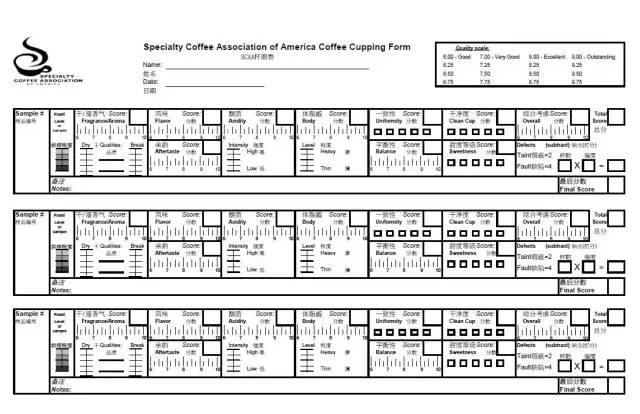
Among them, flavor (flavor) and acidity (acidity) are closely related to acidity. A cup of acid-free coffee will suffer a big loss on these two scores, falling directly out of the 80-point premium coffee line.
Let's take a look at the coffee flavor wheel in the picture below. Without acidity, almost half of the taste will be gone.
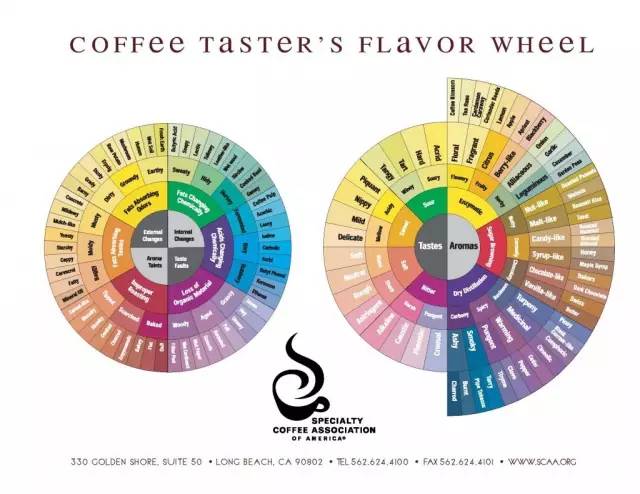
▍ flavor (flavor)
The relationship with acid comes from the degree of baking.
If the flavor substances in coffee become caramelized or Maillard reaction products due to too deep baking degree, the flower and fruit flavor in that flavor wheel will be lost as a whole. Usually, high-quality flower and fruit flavor can only be captured at a relatively shallow baking degree (volatile in roasting), while shallow roasting will not decompose more organic acids, which will inevitably lead to clear acidity.
▍ acidity (acid)
Coffee needs elegant and attractive acid to have a higher score, including that coffee itself contains a lot of organic acids (chlorogenic acid, malic acid, citric acid, gluconic acid, etc.).
At the same time, a large number of fruity alcohols, esters, aldehydes and ketones, all of which give coffee a special acidity with a fruit flavor.
So coffee will contain more or less sour substances, after all, this is a berry fruit.
What makes coffee acidity?
Acidity is the most important item in coffee tasting.
Acidity, which is usually used to describe the flavor of coffee, describes a lively, fresh, refreshing feeling, similar to the taste of wine, with a strong and exciting texture, and sometimes called brightness.
Without acidity, coffee tastes empty and boring, just like it has no vitality.
Fresh coffee beans contain a variety of organic chemicals that make up the unique taste of coffee. One of them is chlorogenic acid, which gradually decomposes in the baking process, producing a large number of aromatic substances.

The origin and variety of coffee beans
The acidity of coffee has a lot to do with the variety of coffee and the depth of roasting, while coffee is acidic because coffee beans fully absorb the acid of pulp in the process of growth and treatment.
The taste of raw coffee beans is the same as fruit, a variety of soil will also affect the growth and flavor of fruits, different soil quality, climate, water, altitude and so on, so that beans from different areas have their own unique taste.
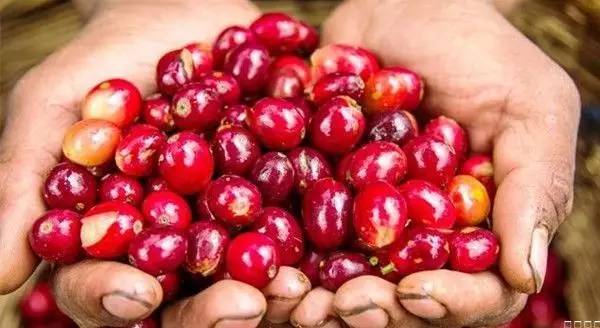
An important parameter of coffee is planting altitude.
Because of the steep growth conditions at high altitude, lack of oxygen and lack of sunshine, the bean growth cycle is longer, and the higher the growth density is, the more flavor substances will be accumulated. As a result, high-altitude coffee beans tend to show a stronger sour taste, such as Ethiopia, Colombia, Nicaragua and so on.
The acidity of some coffee shows its identity, which is typical of the high-value characteristics of Central America and East Africa. Like coffee from Yemen or East Africa (Kenya, Zimbabwe), its acidity is characterized by an impressive fruity aroma, or a texture similar to red wine, while some from the Central American highlands or the Caribbean, often with so-called bright acidity.
In addition, fresh beans also have high acidity.
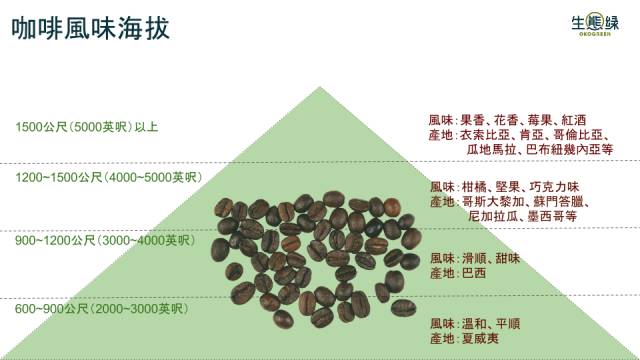
At present, more than 60 countries in the world are engaged in coffee cultivation, mainly distributed in the area between 25 degrees south and north latitudes, commonly known as "coffee belt (Coffee Belt)", mainly to produce "Arabica" varieties and "Luofosda" varieties. However, even the same variety will produce coffee with its own characteristics because of its natural environment, cultivation methods, processing methods or production conditions in different regions.
Degree of baking
The two major links of baking and cooking can control the acidity and acidity to a considerable extent to meet the sensory needs of different consumers.
The longer the baking time, the higher the degree of caramelization, the more acidic substances are destroyed, the less sour taste is; the shorter the baking time is, the lower the degree of caramelization is, the less acidic substances are damaged, and it is easy to make sour coffee.
In other words, the degree of roasting is inversely proportional to the sour taste of coffee.
Based on the understanding of different coffee beans, the baker will show a unique flavor of beans from different places and varieties with different baking degrees, such as preserving the bright sour or floral flavor of beans, or showing mellow sweetness or coke.
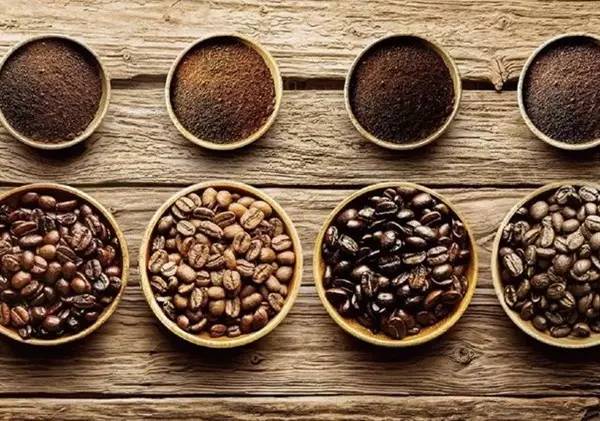
Many people are not used to sour coffee, but many old gluttonous coffee connoisseurs like the lively, clear and varied layers of light-roasted coffee.
At the beginning of the mouth, you will feel the acidity, and after a while the sour taste disappears and turns into a spicy aroma, or a lemon or citrus-like fragrance, and finally presents a sweet aroma like cocoa.
In fact, there are still many people who prefer deep-baked carbon baking.
Almost all coffee in the very deep roasting, the flavor is similar to the bitter sweet, which is also the secret of the quality control of large chains.
Starbucks, which we often drink, is to admire deep-baked coffee, which has a strong taste and is not easy to drink sour.

The way of making and cooking
Generally speaking, the lower temperature water will be more likely to brew sour coffee than the higher water temperature, and the higher the water temperature, the more bitter the coke will taste. If you stir too many times or keep it warm for too long, the sour taste of the coffee will appear as the temperature decreases.
Of course, in addition to the water temperature, there are grinding degree, time, water, coffee content and other variables will affect the flavor of coffee, and even using different utensils will have some differences in taste and oral development.
Each cup of coffee has a variety of aroma and taste elements, and over time, there will be changes in the level of acidity, aroma and taste.

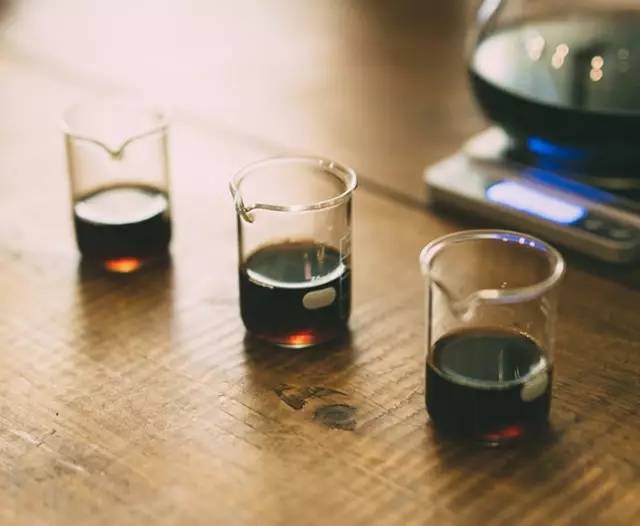
What kind of acidity is good coffee?
The acids in coffee have pleasant acidity (Acidity) and uncomfortable sour taste (Sour). It is not difficult to tell the good acid from the bad acid, just as you can tell the difference between fruit acid and hydrochloric acid.
If the brewing temperature is too low, or overextracted, the tannins and nicotinic acid in the coffee will enter your mouth and stimulate the underside of the tongue, accompanied by a pungent smell that makes you feel uncomfortable.
If a cup of coffee has a rich taste, such as: sweet, silky smooth, then add some bright acid it will look very plump.
The so-called "bright" feeling is that the sour smell brings more abundant connotation to the sour taste. Some slightly irritating fragrance can refresh the mind and make people pay attention to it at once.
For example, ginger, soda, lemon, apple, orange, tomato, ripe banana, their brightness is getting lower and lower in order.
Most people don't like the sour taste of coffee, probably because they are not used to the combination of sour and bitter taste.
Sour taste can be suppressed by sweetness. If you think the coffee is too sour, you can choose to add sugar, not only will not affect other mellow taste, but also can mention the sweetness of the coffee.
Indeed, many Asians really don't like sour taste, and there is some conflict between the worldwide judging system and the general senses of Asians.
Old-school coffee people in Japan have always claimed that coffee is the art of bitterness, and the chemical level is also studying how to better decompose chlorogenic acid into chlorogenic acid lactone, which they think is a good bitter taste, and inhibit the decomposition product of chlorogenic acid, astringent quinic acid and caffeic acid.
Caffeic acid is not the only criterion for judging whether the quality is good or bad or whether it is fresh or not. it is all a matter of subjective taste. Anyway, the most important thing is to suit your own taste.
Important Notice :
前街咖啡 FrontStreet Coffee has moved to new addredd:
FrontStreet Coffee Address: 315,Donghua East Road,GuangZhou
Tel:020 38364473
- Prev
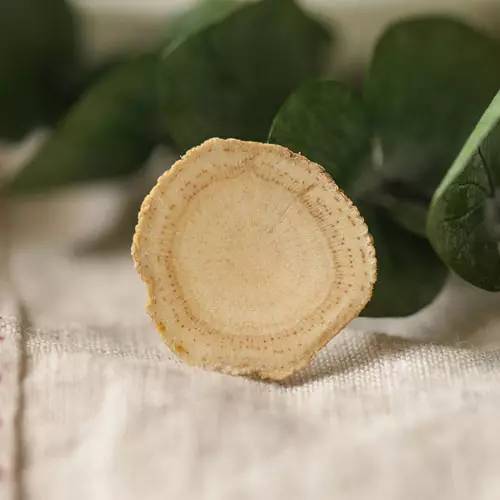
Can American ginseng be drunk with tea?
Following Cafe (official Wechat account vdailycom) found that coffee is a refreshing drink that many office workers drink regularly, while white-collar women in some offices drink coffee almost every day, gradually forming a habit. Some experts believe that for the sake of health, drinking coffee is better than drinking American ginseng. Drinking two cups of coffee helps, according to a study.
- Next
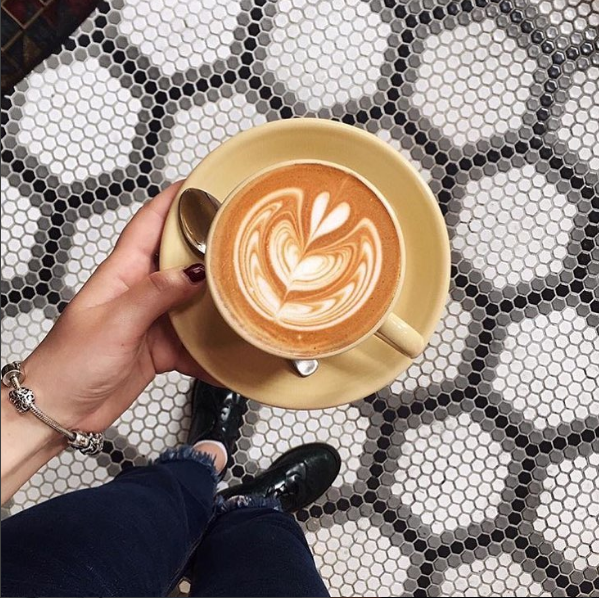
How to make a cup of mellow coffee?
Following Ka Pin (Wechat official account vdailycom) found that Beautiful Cafe opened a small shop of its own Theres a whole universe of equipment out there right now. It can be dizzying. And coffee is a complex process, with several important variables that can change the completion
Related
- Beginners will see the "Coffee pull flower" guide!
- What is the difference between ice blog purified milk and ordinary milk coffee?
- Why is the Philippines the largest producer of crops in Liberia?
- For coffee extraction, should the fine powder be retained?
- How does extracted espresso fill pressed powder? How much strength does it take to press the powder?
- How to make jasmine cold extract coffee? Is the jasmine + latte good?
- Will this little toy really make the coffee taste better? How does Lily Drip affect coffee extraction?
- Will the action of slapping the filter cup also affect coffee extraction?
- What's the difference between powder-to-water ratio and powder-to-liquid ratio?
- What is the Ethiopian local species? What does it have to do with Heirloom native species?

